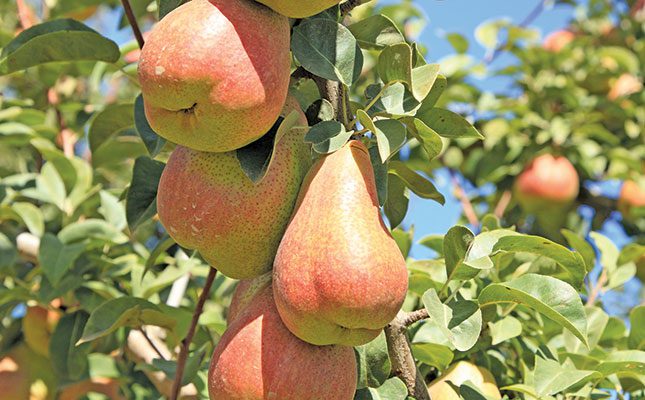
Photo: Glenneis Kriel
Jordaan said that South Africa’s rolling blackouts had resulted in farmers being unable to irrigate their crops during critical times. “There is no way that producers can supply crops under drip irrigation with sufficient water with the current power restrictions,” Jordaan said.
On the processing front, the industry had been spending millions of rand on diesel to run generators to keep cold storage facilities and factories running.
READ Profiting from apples: why quality trumps yield
Anthony Dicey, chairperson of the CFPA and a farmer near Wolseley, said that farmers were investing in generators and solar energy to alleviate the impact of load-shedding, but that this was significantly driving up production costs.
He added that the current situation was unsustainable as farmers could not mitigate load-shedding through diversifying, a strategy often used by farmers to offset market and climate risks.
Dicey said that while markets were buoyant, load-shedding and the uncertainty over the future of the Ashton Canning factory was making farmers hesitant to increase the hectarage planted to fruit trees for the canning market.
READ Cactus pear: one crop, three profitable markets
“Farmers are still trying to acquire the [Ashton Canning] factory, but it is difficult to get a financial partner under the current challenging economic conditions. We still don’t know what will happen next season,” he said.
The situation was also creating inequality in the industry. Dicey explained that suppliers of Langeberg & Ashton Foods had not seen any price increases for the past three years, whereas Rhodes had been paying producers more every year. These two companies competed on the international market.
On the production side, the apricot harvest for processing increased by 4,7% from 30 118t to 31 525t. Volumes for the juice and puree market had increased from 15 970t to 17 200t, and those for the canning market had increased marginally from 14 148t to 14 325t.
READ Pomegranate: a superfood that thrives in the Klein Karoo
Jordaan said fruit aimed at the juice and puree market had increased greatly thanks to good prices as a result of a poor harvest in Spain. Only 3 859t went to the juice in puree market in 2019/2020, which increased to 8 339t during the 2021/2022 season.
The favourable prices were also resulting in farmers diverting apricots directed at the canning and dried fruit markets, to the juice and puree market. “Sending apricots to the juice and puree market will lower labour costs, and [remove] the risk of load-shedding associated with the drying of fruit.”
The cling peach and early Bon Chretien pear season had started a little earlier this year and fruit sizes were generally smaller, he added.
Jordaan said that the first peaches had already started coming in, and showed good quality. The general consensus, however, was that the cling peach harvest would be 2% to 5% smaller than the first estimate at 146 000t. The industry harvested 159 574t last year.
It was still too early to predict what would happen with Bon Chretien pears, but Jordaan suspected that the harvest would be around 5% smaller than the 102 697t harvested last season.











